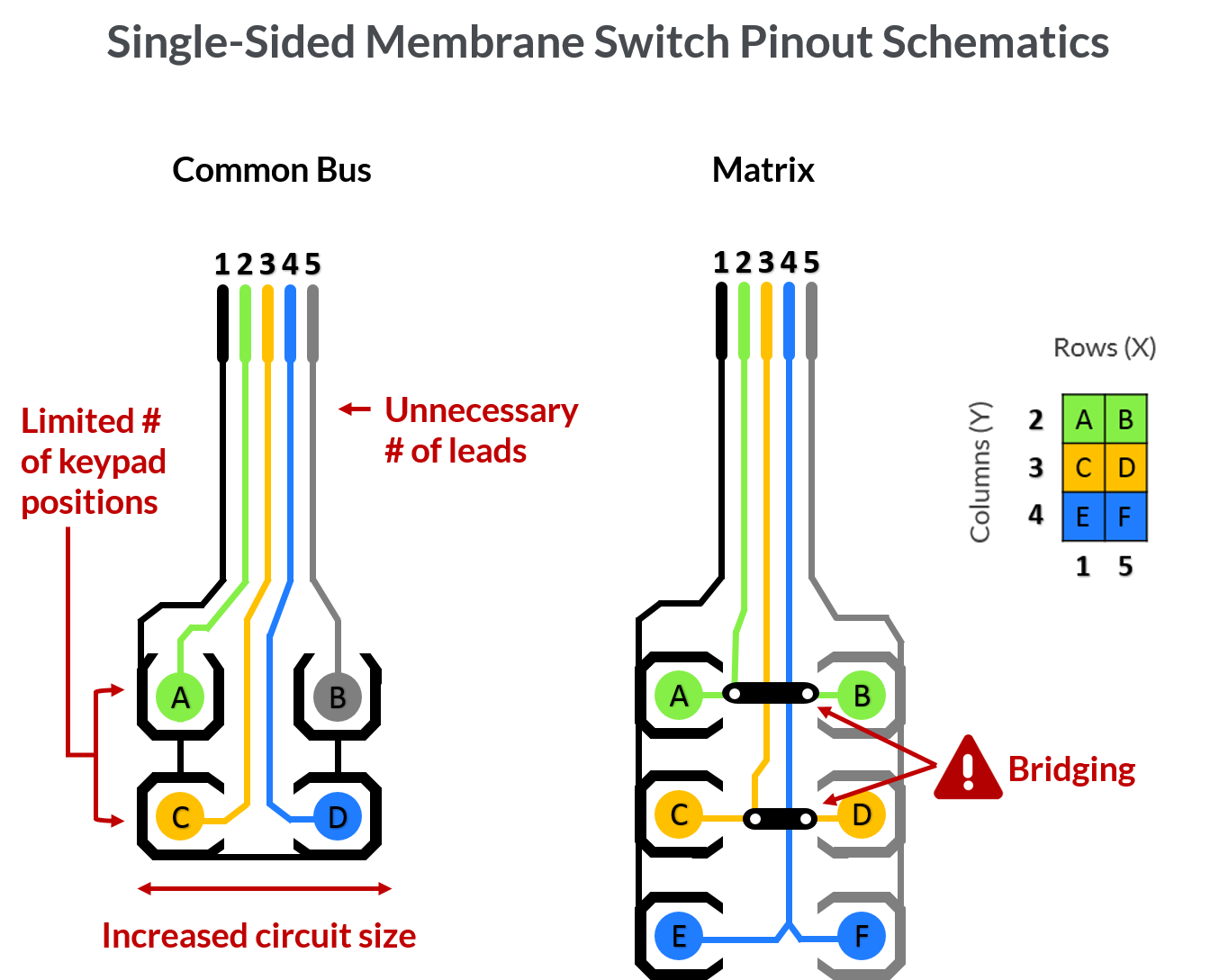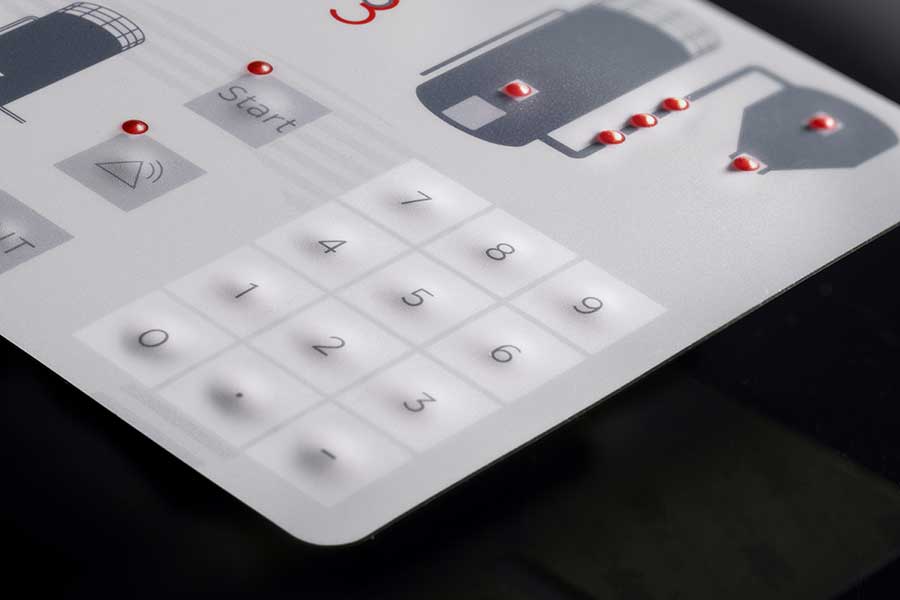Discover Various Sorts Of Membrane Switch Technologies for Your Demands
Discover Various Sorts Of Membrane Switch Technologies for Your Demands
Blog Article
Comprehending the Functionality of Membrane Layer Switches Over for User User Interface Instruments
The capability of membrane changes stands for a considerable innovation in customer interface design, combining performance with aesthetic adaptability. As sectors increasingly focus on customer experience, understanding the nuances of membrane layer switch innovation comes to be important.
What Are Membrane Buttons?
Membrane switches are ingenious user interface tools that promote customer interaction with electronic devices. These flexible elements include several layers, consisting of a visuals overlay, spacer, and a published circuit layer. The layout enables a smooth assimilation right into numerous digital tools, enhancing both the visual and practical elements of interface.
Membrane switches are typically employed in a large array of applications, from family home appliances to commercial machinery and medical devices. Their building and construction generally features a thin profile, making them a perfect option for compact designs. The responsive comments offered by these switches can be engineered to satisfy details individual choices, making sure reliable interaction between the user and the gadget.
Resilience is another substantial advantage of membrane switches, as they are resistant to dirt, wetness, and chemicals, which boosts their lifespan popular environments. Additionally, these buttons can be personalized in terms of shape, dimension, and graphic style, permitting branding and user-specific features. On the whole, membrane changes represent a sensible remedy for improving customer experience in electronic devices, integrating functionality with aesthetic appeal in an efficient fashion.
Just How Membrane Layer Switches Over Job
Operating on a straightforward concept, membrane layer switches make use of a layered construction to sign up user input efficiently. Each switch includes several layers, including a published circuit layer, a spacer layer, and a top graphic layer, which are developed to work with each other seamlessly. When a customer presses the leading layer, it compresses the spacer layer, bringing the conductive elements of the circuit layer right into contact with each other.
This contact develops a closed circuit, signaling the gadget to perform a particular feature. The design enables various configurations, consisting of tactile responses, which can boost the customer experience by giving a physical feeling upon activation. The materials made use of in membrane switches typically consist of flexible substratums, such as polyester or polycarbonate, which make certain sturdiness and durability versus damage.

Trick Benefits of Membrane Layer Switches

An additional considerable advantage is their compactness. Membrane layer switches are slim and lightweight, which makes it possible for manufacturers to conserve area in their tools without giving up performance. This function is specifically useful in applications where weight and quantity are crucial considerations.
In addition, membrane layer buttons are resistant to dirt, wetness, and chemicals, enhancing their toughness. This resilience prolongs their life expectancy and minimizes the demand for regular substitutes, resulting in price financial savings with time.
In addition, the responsive responses offered by membrane buttons can be optimized to boost individual interaction. They can include functions such as raised advice buttons or audible clicks, improving functionality and customer experience.
Applications Throughout Industries
Interface gadgets using membrane layer switches are common find out this here in a large array of markets, showcasing their adaptability and functionality. Membrane Switch. In the medical field, membrane switches are important to tools such as analysis equipment and person monitoring systems, where their durability and simplicity of cleaning are important for preserving hygiene requirements. In the automobile market, these switches are used in dashboard controls and infomercial systems, supplying a streamlined and modern user interface for customers.
Moreover, the consumer electronic devices sector benefits from membrane switches in home appliances and portable tools, where compact layout and user-friendly interfaces enhance customer experience. Industrial applications likewise take advantage of membrane layer changes for control panels in machinery and automation systems, emphasizing their effectiveness and resistance to rough atmospheres.
In the aerospace additional hints and protection industries, membrane buttons are made use of in cabin controls and tools, where integrity and efficiency under extreme conditions are critical. Additionally, the pc gaming sector increasingly includes membrane layer switches in controllers and arcade equipments, adding to an appealing user experience. On the whole, the adaptability of membrane layer changes enables their prevalent use throughout many markets, underscoring their relevance in modern-day customer interface style.
Future Trends in Membrane Layer Change Technology

Furthermore, using innovative materials, such as polycarbonate and polyester films, is anticipated to climb, providing enhanced durability and resistance to environmental stress factors. These products add to the total long life of membrane buttons, making them appropriate for harsher industrial applications.
In addition, the consolidation of wise technology, including IoT connectivity, will make it possible for membrane layer switches to interact with other devices and systems, assisting in an extra interactive customer experience. This fad aligns with the growing need for clever devices across different markets, from health care to customer electronics.
Last but not least, personalization alternatives are prepared for to expand, allowing makers to develop bespoke services customized to details customer demands and preferences. These developments will certainly place membrane buttons as crucial elements in the development of user interface technology.
Conclusion
In final thought, membrane changes represent an essential advancement in individual interface technology, offering a trusted and functional service for varied electronic applications. As advancements in material scientific research and touch sensing modern technologies continue, the functionality and applicability of membrane layer switches are expected to increase, reinforcing their importance in modern-day electronic gadgets.
Report this page